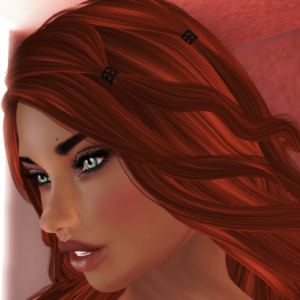In 2023, appliers are not as widely used as most folks use Bakes on Mesh (Commonly referred to as BOM). I’m keeping these pages available now since some may find them helpful, but if you’re new to SL or making a new avatar you may want to check out your BOM options instead!
Note: While the images are from 2017 products, the content has been reviewed and is up to date as of July 2020.
Need more mesh help or info? Check out our full Mesh Crash Course.
Appliers are one of the most commonly used items for mesh bodies. I see a lot of users asking questions about Second Life appliers or being confused as to what appliers can offer them. Today I’ll go over what they are, how to use them, and why you may want them.
Second Life Appliers: The Basics
Think of appliers like classic avatar clothing for mesh avatars (excluding BOM – more on that in this post). The applier itself is an object (usually a HUD) that applies a texture to mesh body parts. Some of the more common textures are skins, clothes, and makeup. Tattoos, beards, and scars are also textures that can be used via applier, as well as anything else you would want on your mesh body. To understand appliers you first must know about layers.
Layers
Layers allow multiple textures to be worn at once. Lower layers are hidden by higher layers. You’ll find the skin almost always applies automatically to the lowest layer. Most commonly you’ll have three other layers to select from when using non skin appliers.
Think of your real body and clothing for a moment. Your skin is one layer, any tattoos you may have are on a layer above it, your underwear is another layer above, and your regular clothing is the layer on top. Your tattoos hide what’s on the skin under them. Underwear hides any tattoos under it and your pants hide your underwear. It’s exactly the same on your avatar. Here is a breakdown of the most common layers:
-
Skin

- Skin appliers almost always automatically apply to this layer.
- As such layers usually aren’t even listed as an option for users.
- Covers the body parts as the lowest layer.
- Anything else applied will be seen on top of the skin.
- Skin appliers almost always automatically apply to this layer.
-
Tattoo
- This is applied directly over the skin, but under the Underwear and Clothing layers.
- This means it’ll show on top of the skin but anything on the Underwear or Clothing layers will cover it up.
- Popular for not only tattoos but also makeup, beards, scars, blood, bruises, and anything else that would be visible over the skin but covered by clothing.
- This is applied directly over the skin, but under the Underwear and Clothing layers.
-
Underwear
- Applied over the Tattoo layer but under the Clothing layer.
- Just like in real life this will cover your skin and anything that’s directly on your skin via the Tattoo layer.
- This doesn’t only have to be used for bras, boxers, and panties.
- Want to wear a long sleeved shirt under a crop top? Apply the long sleeved shirt on the Underwear layer and the crop top on the Clothing layer.
- Applied over the Tattoo layer but under the Clothing layer.
-
Clothing
- The Clothing layer is the top layer.
- As such it will cover anything on other layers since they are below it.
- Want to get creative? Use Tattoos as decoration on clothes!
- Instead of placing a Tattoo on the Tattoo layer, consider placing it on the Clothing layer with the shirt or pants on the Underwear layer.
- This will show the Tattoo over the clothing and it may look like a neat design. Then again it may not. Play around!
- The Clothing layer is the top layer.
With the basic knowledge of how layers work you’re able to experiment and play with different ideas. Give the tattoo on clothing and the layered shirts a shot!